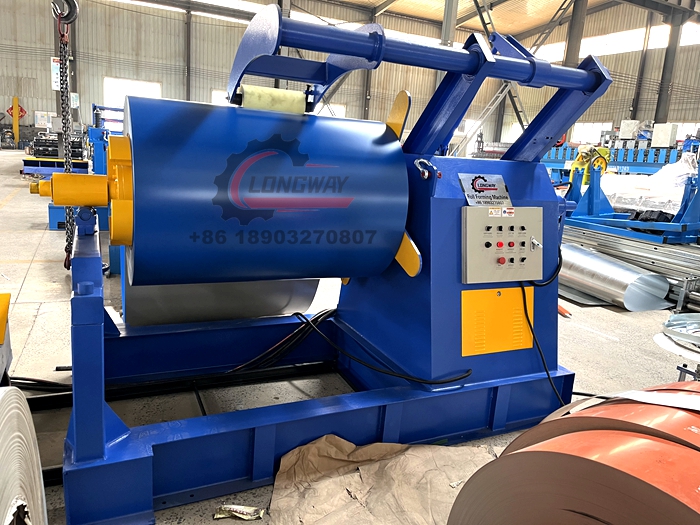c channel making machine
The C Channel Making Machine Revolutionizing Metal Fabrication
In the realm of metal fabrication, the importance of precision and efficiency cannot be overstated. One machine that has become indispensable in this field is the C channel making machine. This innovative piece of equipment is designed to produce C-shaped channels, which are widely used in various industries, from construction to manufacturing. With the advent of advanced technology, C channel making machines have evolved significantly, enhancing their capabilities and applications.
What is a C Channel?
C channels, also known as C-beams or C-sections, are a type of structural steel shape that features a cross-section resembling the letter C. They are characterized by their open profile, consisting of two vertical flanges and a horizontal web. These channels are essential components in building frames, supports, and other structural applications due to their strength and versatility. Their design allows for easy stacking, transport, and integration into various structural assemblies.
The Functionality of C Channel Making Machines
C channel making machines are engineered to optimize the production process of these vital structural components. The machine typically works through a series of steps, including decoiling, feeding, roll forming, cutting, and stacking. The process begins with uncoiling a strip of metal, usually steel, which is then fed into a system of rollers that gradually shape the metal into a C channel profile.
One of the standout features of modern C channel machines is their high degree of automation. Equipped with advanced PLC (Programmable Logic Controller) systems, these machines allow for precise control over the production process. Operators can easily set parameters for the dimensions of the channels, including their lengths and thicknesses, ensuring consistent quality and reducing waste.
Applications and Benefits
c channel making machine

The applications of C channels are numerous and diverse. In construction, they serve as crucial components for scaffolding, framing, and support systems. Their strength-to-weight ratio makes them an ideal choice for various load-bearing applications. In the manufacturing sector, C channels are often used in conveyor systems and machinery frames, providing a sturdy foundation for heavy equipment.
The benefits of using a C channel making machine extend beyond just the product itself. The automated nature of these machines boosts productivity, allowing manufacturers to meet high demand with less labor. Additionally, the precision achieved through automation reduces errors, leading to lower material costs and minimized waste.
Technological Advancements
Recent advancements in C channel making machines have further transformed their functionality. Technologies such as robotics and AI-driven analytics have been integrated to enhance operational efficiency. For example, automated quality control systems now provide real-time monitoring during production, identifying defects before they can impact the final product.
Moreover, energy-efficient designs and sustainable manufacturing practices have become a priority. Many modern machines are built with features that minimize power consumption while maximizing output, aligning with global initiatives towards sustainability.
Conclusion
The C channel making machine represents a significant achievement in metal fabrication technology. Its ability to produce high-quality C channels efficiently makes it a vital tool for the construction and manufacturing industries. As technology continues to advance, we can expect further enhancements to these machines, enabling even greater efficiency and sustainability. Manufacturers who invest in C channel making machines will not only benefit from increased productivity but also contribute to the evolving landscape of modern construction and infrastructure development. In an era where precision and efficiency are paramount, C channel making machines stand out as a cornerstone of innovation in metal fabrication.
-
Roof Panel Machines: Buying Guide, Types, and PricingNewsJul.04, 2025
-
Purlin Machines: Types, Features, and Pricing GuideNewsJul.04, 2025
-
Metal Embossing Machines: Types, Applications, and Buying GuideNewsJul.04, 2025
-
Gutter Machines: Features, Types, and Cost BreakdownNewsJul.04, 2025
-
Cut to Length Line: Overview, Equipment, and Buying GuideNewsJul.04, 2025
-
Auto Stacker: Features, Applications, and Cost BreakdownNewsJul.04, 2025
-
Top Drywall Profile Machine Models for SaleNewsJun.05, 2025








